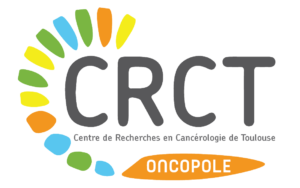
Characterization and targeting of pre-leukemic stem cells from B-acute lymphoblastic leukemia
Bastien Gerby, PhD, CRCN CNRS
B-cell acute lymphoblastic leukemia (B-ALL) is the most common pediatric cancer. Current chemotherapy is efficient at inducing long-term remission in childhood B-ALL but is associated with severe side effects and undesirable consequences including general toxicity and second malignant neoplasms. Those frequent relapses are obviously due to the persistence of a residual malignant population of pre-leukemic stem cells (pre-LSCs) that escape the treatment and are able to maintain the neoplastic process. Therefore, the search for innovative and more targeted therapies is an important issue, based on an improved understanding of the mechanisms of leukemia initiation and transformation (Fregona V*, Bayet M*, Gerby B, Cancers (Basel) Review, 2021).
Thus, our research focuses on the identification, the characterization and the targeting of pre-LSCs in B-ALL. In that purpose, we develop cellular and animal models aiming to understand how a primary oncogenic event in B-ALL such as a chromosomal translocation, reprograms normal B-cells to pre-LSCs. As example, we generated a transgenic mouse model expressing the PAX5-ELN protein fusion during the B-cell development. This model recapitulates the multi-step process of B-ALL development and represents a prime tool to explore the pre-leukemic phase of the disease before the malignant transformation (Jamrog L et al., PNAS, 2018). Our recent work indicates that PAX5-ELN induce in the B-cell compartment the emergence of a self-renewing population of pre-LSCs. This population are restricted in the cell-cycle, are resistant to conventional chemotherapies and are the cellular target of leukemia transformation.
In this context, the objectives of our research program (Figure) are:
- To define the cellular and functional properties reprogrammed by the primary oncogenes of B-ALL (PAX5-ELN, PAX5-P80R, TCF3-PBX1…) in pre-LSCs.
- To define and compare the molecular mechanisms reprogrammed by these primary oncogenes.
- To develop mechanism-based therapy targeting pre-LSCs activity.
- To define whether pre-LSC biological properties are relevant in human B-ALL.
- To develop pre-clinical models by using patient-derived-xenografts (PDXs) of B-ALL.

Key words:
- B-acute lymphoblastic leukemia;
- oncogenic transcription factors;
- pre-leukemic stem cells;
- oncogene reprogramming;
- self-renewal;
- leukemia initiation and transformation.
Grants :
Agence Nationale de la Recherche (ANR) ; Institut National du Cancer (INCa) ; Fondation ARC ; Ligue Nationale Contre le Cancer (LNCC).

